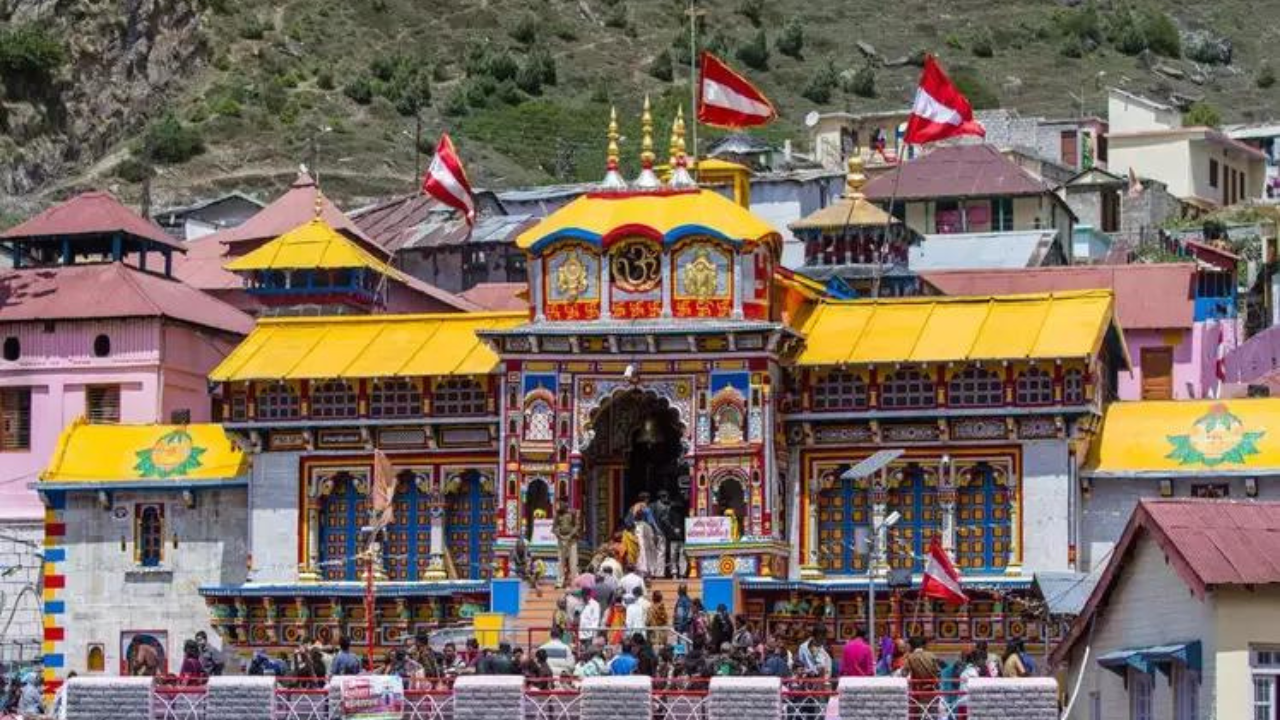DEHRADUN: In a development that has triggered concern, cracks have been reported in ‘Singh Dwar’, the main entrance of Badrinath temple.
TOI has exclusively learned that the cracks were first spotted a few weeks ago, although it was not revealed to the public. Initially, there were apprehensions that the cracks may be due to subsidence — Badrinath is just 40km from Joshimath, where large-scale subsidence happened earlier this year. However, ASI officials said they sent a team, which conducted a ground survey and found that the cracks were due to “rain and other environmental factors”.
‘Replacing iron clamps on wall of Singh Dwar with copper ones’
Superintending archaeologist (Dehradun circle) Manoj Saxena told TOI, “These are small cracks and bulges in the inner wall of ‘Singh Dwar’. Our team has initiated repairs by replacing the iron clamps on the wall that hold the stones together with copper clamps.”
Tourism minister Satpal Maharaj said, “They are minor cracks caused by shifting of earth… We are keeping an eye on the development.” The ‘Singh Dwar’ was constructed along with the rest of the temple’s present structure around the 17th century and is part of the main temple complex. It has idols of several deities installed on both sides of the structure.
Pilgrims entering through the gate usually spend time there to worship the deities before reaching the sanctum sanctorum. MPS Bisht, head of the geology department at HNB Garhwal University in Srinagar (Pauri Garhwal), said: “Joshimath and Badrinath are located on different geological formations. I don’t think that the situation at Badrinath has any connection with that of Joshimath. There must be some local phenomenon behind the cracks in the temple.”
Speaking about the probable reasons behind the cracks, ASI officials said it is likely that accumulated snow and vegetation had caused water to seep into the temple walls, causing the iron clamps to rust and lose their strength. “The last renovation of ‘Singh Dwar’ was done in the 1990s. During inspection, we found that many stones had been dislocated and the gaps between the stones had widened. The bulged portions are being treated locally by ‘open walling’. First, we remove the stones from the wall so that the dead mortar can be replaced with the fresh one to reset the stones,” Saxena said.
He added that the repair work has been going on for the past one week and is likely to go on a for a few more weeks. “The cracks are vertical in nature. If needed, we will replace the old stone to ensure that they do not widen,” Saxena said.
The official added that ASI had received instructions from the Centre to carry out the repairs expeditiously, which are being done in coordination with the culture department of the state government. “The ASI has sent an estimate of Rs 5 crore to the government for the repairs,” he said.
TOI has exclusively learned that the cracks were first spotted a few weeks ago, although it was not revealed to the public. Initially, there were apprehensions that the cracks may be due to subsidence — Badrinath is just 40km from Joshimath, where large-scale subsidence happened earlier this year. However, ASI officials said they sent a team, which conducted a ground survey and found that the cracks were due to “rain and other environmental factors”.
‘Replacing iron clamps on wall of Singh Dwar with copper ones’
Superintending archaeologist (Dehradun circle) Manoj Saxena told TOI, “These are small cracks and bulges in the inner wall of ‘Singh Dwar’. Our team has initiated repairs by replacing the iron clamps on the wall that hold the stones together with copper clamps.”
Tourism minister Satpal Maharaj said, “They are minor cracks caused by shifting of earth… We are keeping an eye on the development.” The ‘Singh Dwar’ was constructed along with the rest of the temple’s present structure around the 17th century and is part of the main temple complex. It has idols of several deities installed on both sides of the structure.
Pilgrims entering through the gate usually spend time there to worship the deities before reaching the sanctum sanctorum. MPS Bisht, head of the geology department at HNB Garhwal University in Srinagar (Pauri Garhwal), said: “Joshimath and Badrinath are located on different geological formations. I don’t think that the situation at Badrinath has any connection with that of Joshimath. There must be some local phenomenon behind the cracks in the temple.”
Speaking about the probable reasons behind the cracks, ASI officials said it is likely that accumulated snow and vegetation had caused water to seep into the temple walls, causing the iron clamps to rust and lose their strength. “The last renovation of ‘Singh Dwar’ was done in the 1990s. During inspection, we found that many stones had been dislocated and the gaps between the stones had widened. The bulged portions are being treated locally by ‘open walling’. First, we remove the stones from the wall so that the dead mortar can be replaced with the fresh one to reset the stones,” Saxena said.
He added that the repair work has been going on for the past one week and is likely to go on a for a few more weeks. “The cracks are vertical in nature. If needed, we will replace the old stone to ensure that they do not widen,” Saxena said.
The official added that ASI had received instructions from the Centre to carry out the repairs expeditiously, which are being done in coordination with the culture department of the state government. “The ASI has sent an estimate of Rs 5 crore to the government for the repairs,” he said.
